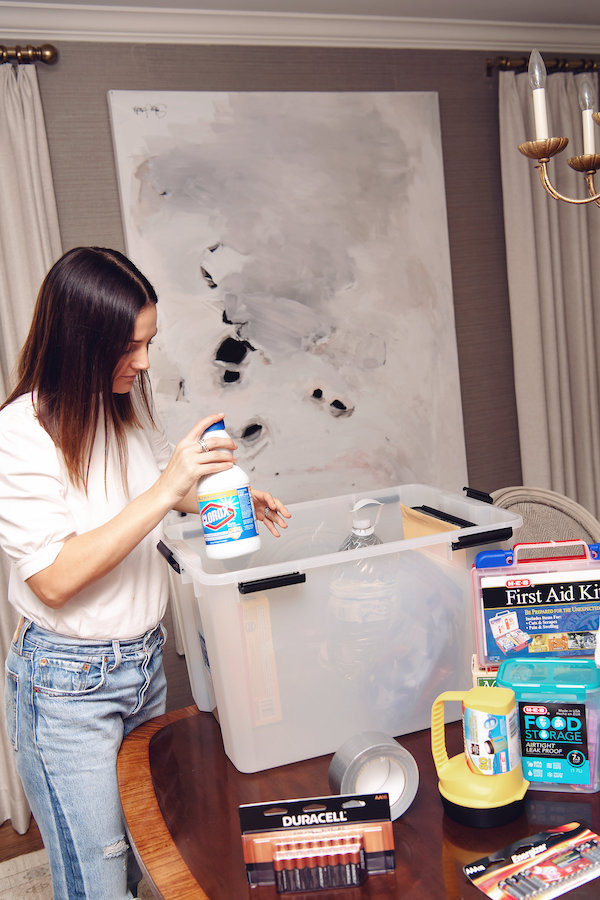
In partnership with Clorox
Our thoughts are with everyone in the Carolinas who have had to evacuate their homes due to Hurricane Florence. This is such a frightening experience to go through, and our prayers are with the East Coast this weekend.
With high season for natural disasters once again upon us, it feels like everyone in Houston wants to be more prepared should another 1,000 year storm come again. Unfortunately, there is nothing we can do to prevent a natural disaster from occurring, however we can take steps to prepare before a storm hits.
It’s hard to believe that this time last year Houston was beginning down a long road to recovery after Hurricane Harvey. We recently asked a handful of Houstonians who had been affected by the storm about where they are now in the recovery process, and many are still not back into their homes a whole year later. Of course, the emotional recovery process takes much longer, and it’s so important that we continue to support those who were affected.
Today I’m talking about the items you need for a sufficient emergency preparedness kit to ensure that you and your family are well equipped in the event of a storm hitting. As we heard first hand in our Harvey interviews, many families didn’t have time to think, much less pack, when they had to evacuate their homes and belongings.
While this isn’t a fun topic to talk about, it’s super important and relevant, especially this time of year and with Hurricane Florence on its way. I feel incredibly thankful that our family was not directly affected by Hurricane Harvey, however with two little boys and a dog in tow, I want to be sure that we have the necessities prepared in event that a natural disaster occurs again. Clorox and I are collaborating to share the importance of preparation for a natural disaster and I know my readers, especially those of you in Houston, will appreciate the guidance. Read on below for 6 categories of essentials that I’m preparing ahead, and for details on how you can prep efficiently as well.

1. Food and LOTS of Water
As soon as news of a bad storm spreads, people run to the grocery store to gather extra food and water. It’s not uncommon to see non-perishable goods (especially popular items like granola bars and favorite cereals!) and water bottles disappear from store shelves quickly. To prevent being a part of the mad dash, keep a stash of non-perishable foods in your pantry or garage. The American Red Cross suggests three days’ worth of food in the event of evacuation, and two weeks’ worth of food for staying at home. I was surprised to learn that one gallon of water is recommended per person per day. That is a lot of water! Also keep this in mind for pets as well! I designated a reserved supply of dog food and water for Rosie. It gives me peace of mind knowing that we have these provisions readily available in case anything were to happen.
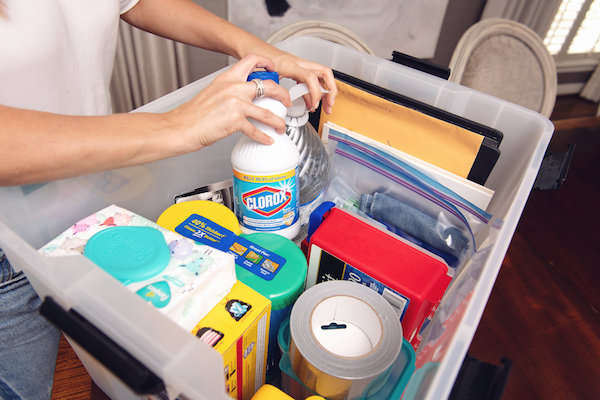
2. Household Liquid Bleach
Having bleach on hand is especially important if you’re in a city like Houston that experiences hurricanes and flooding. Bleach, like Clorox® Regular Bleach2 with CLOROMAX®, can be used to purify unsafe water in the days following a natural disaster and for disinfecting moldy walls, floors and household items. It can also prevent mosquito breeding areas (a huge issue in Houston). If you’re ever uncertain about the quality of your water, you can follow the below steps using Clorox® Regular Bleach2 with CLOROMAX®:
Remove suspended particles by filtering or letting particles settle to the bottom.
Pour off clear water into a clean container.
Add 8 drops (or 1/8 teaspoon) of Clorox® Regular Bleach2 with CLOROMAX® to one gallon of water, or add 1/8 teaspoon of the product to 1.5 gallons of water. Allow the treated water to stand for 30 minutes. Properly treated water will have a slight chlorine odor. If not, repeat dosage and allow the water to stand an additional 15 minutes. The treated water can then be made palatable by pouring it between clean containers several times.
For cloudy water, use 16 drops per 1 gallon of water, or add 1/4 teaspoon of this product per 1.5 gallons of water (3 drops to 1 quart). If no chlorine odor is apparent after 30 minutes, repeat dosage and wait an additional 15 minutes.
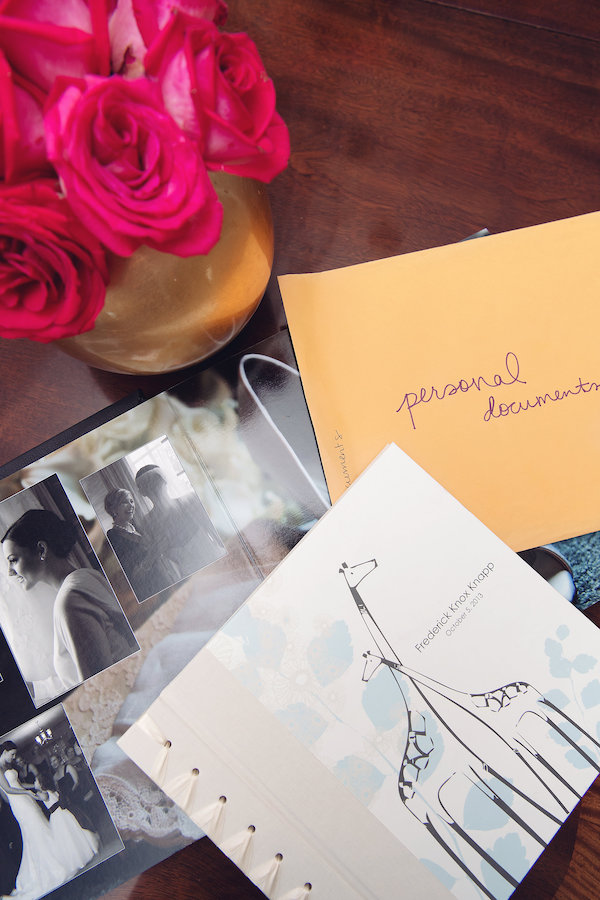
3. Copies of Documents
For most people, your insurance policies, home deed, birth certificates, medical documents, etc. would be hard to round up in a pinch if you ever needed to evacuate. By making copies of all of these documents in advance and filing them into a water safe folder, it would be super easy to grab and go if need be. Also, it’s great to keep any personal items or letters that are sentimental (like the letter Fred wrote me on our wedding day) in a central location so that if an emergency strikes, you know exactly where to grab them. For other items, that it doesn’t make sense to keep in a water safe container, write them on a list so you can review it in the time of need. In the moment, your only thought is getting out safely and as fast as possible (which of course is most important), and you don’t have a clear head about items that you cherish. Of course, nothing is more important than the safety of your loved ones and you should never compromise your safety to save material possessions. There are special treasures that I’d love to keep forever though, if at all possible.
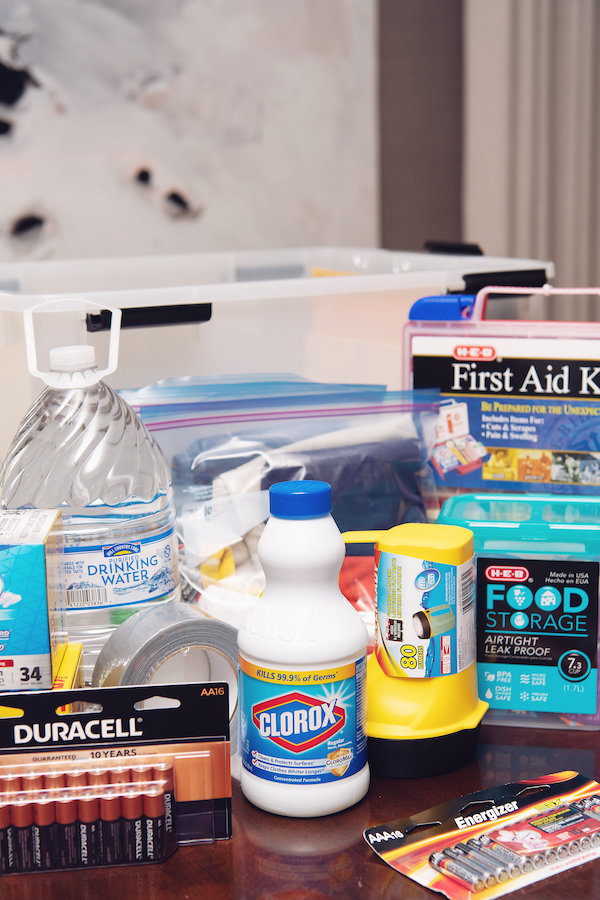
4. Battery powered radio, flashlight, and extra batteries
In the event of losing power, which is very common during storms in Houston even without flooding or a hurricane, it’s important to have a way of knowing what is happening in the outside world, especially if phones die. Keep a battery powered radio, extra batteries, and of course, a flashlight or two set aside in the event that you lose power. I also like to have mini flashlights on hand for Knox and Andrew so that they feel secure in the dark.
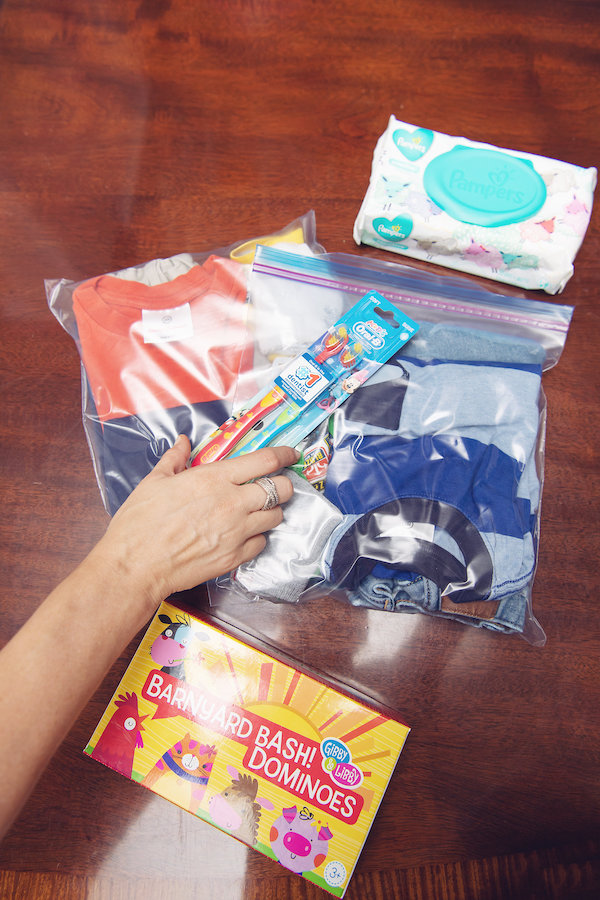
5. Seven Day Supply of Medical Supplies
The American Red Cross suggests keeping a 7 days’ supply of medical supplies on hand in the event of a natural disaster that might prevent you from picking up a refill or having access to your full medicine cabinet. I put together an emergency kit as well as cosmetics for everyone in the family that is easily transportable. This includes diapers, wipes, special soaps (like Andrew’s eczema soap and lotion), and other children’s hygiene supplies that will keep them comfortable should we ever be displaced.
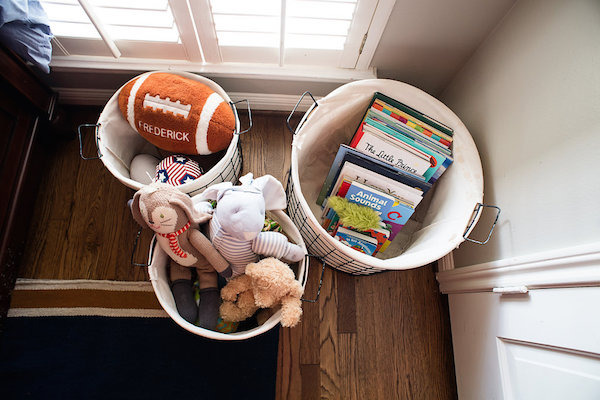
6. Entertainment for the Kids (and for Parents!)
While games and entertainment might not seem high on the list, being able to keep young ones preoccupied so that you can focus on the task at hand is really important. Worst case scenario, you could be stranded from home for a long time without access to your possessions or open stores. I’ve gathered a few favorite books, board games, toys, and coloring books in to one consolidated bin that we could easily take with us if need be. If we were stranded at home, and indoors, it would be super important to have plenty of non-electronic games and books to keep the boys occupied for days on end. For me and FMK, that means books, magazines, cards, and board games as well!
My prayers are with all of you from the East Coast. Thank you to Clorox for collaborating with me to provide guidance on such an important topic. If you have any other helpful preparation tips, please leave them in the comments below.





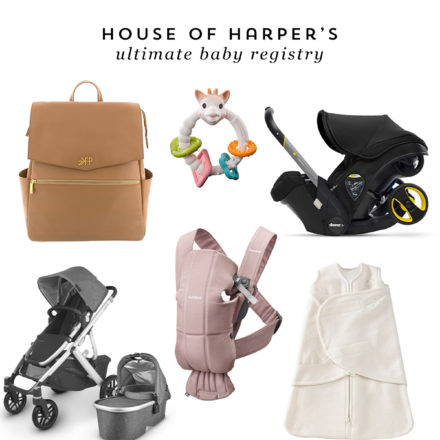




Leave your thoughts